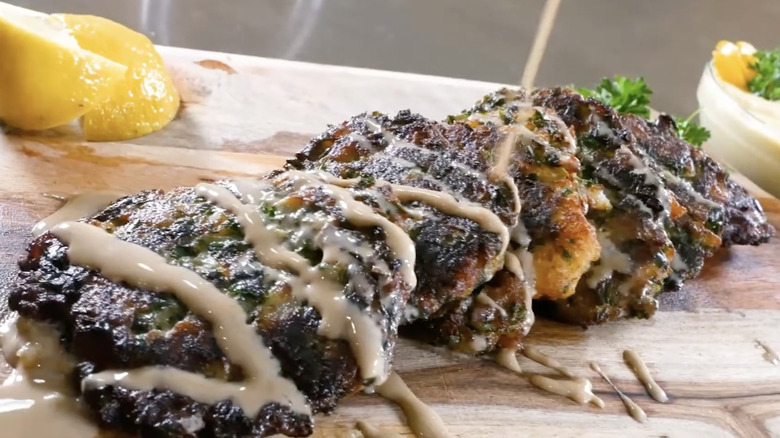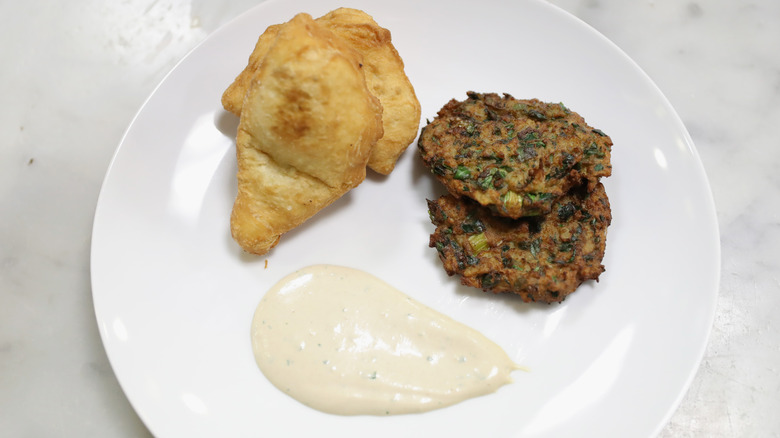Aruk Are The Iraqi Latkes Your Hanukkah Table Needs
When it comes to celebrating Hanukkah, the array of symbolic, historical recipes to choose from is vast. Latkes, jam-filled doughnuts known as sufganiyot, kugel, rugelach, and brisket are just a few. Additionally, within each of these recipes are regional specialties. Given the wide-ranging influence of the Jewish diaspora, the holiday table can showcase a variety of traditions. This Hanukkah, consider drawing inspiration from one of the world's oldest Jewish communities for a delicious Iraqi twist on the classic potato latke.
Unlike a traditional Ashkenazi (Eastern European Jewish) latke recipe, which uses raw, grated potatoes, an aruk latke is made with cooked, mashed potatoes. This cooked potato mix is enriched with fresh herbs and green onions, giving it a signature gold and green appearance once fried. In contrast to the Ashkenazi crisp latke, the aruk features a creamy, tender center with a more aromatic flavor, thanks to the addition of spices, herbs, and alliums.
An Iraqi classic with a rich history
The Iraqi Jewish community has significantly contributed to the Jewish cultural and culinary legacy, with aruk being a treasured part of this heritage. Historically, aruk shares many similarities with the ancient Iraqi recipe for uroog, a kebab-like mixture of mashed vegetables, ground beef, spices, and herbs. The primary difference is uroog's inclusion of meat, while aruk is typically vegetarian.
Shaped into patties and shallow-fried, aruk has evolved over time, and modern variations of aruk feature several adaptations. Parsley is traditional, but other green herbs like dill or cilantro are also commonly used. Some chefs prefer baking their potatoes instead of boiling them, resulting in a more intense potato flavor. Grated white onion, used in concert with chopped scallions, is another variation. As for spices, choices are abundant, including turmeric, paprika, cumin, and garlic powder. A key seasoning element in aruk is a pinch of bahārāt, a spice blend that varies by region in the Middle East. In Iraq, bahārāt often includes a mix of sweet and smoky spices like nutmeg, cloves, allspice, cinnamon, cardamom, paprika, coriander, and cumin. All of these grand flavors combine to create a latke that surpasses expectations.


